#plant history
Text

My niece Una next to the weird plant referred to as the "Eternal Flame" which is older than Una by quite a few years. Una sometimes comes over for fun sleepovers where we paint, watch horror movies, macrame, drink kombucha, read, dress up, take photos.
#linn heidi stokkedal#photography#photographer#analog#analog photography#snapshot#colorfilm#staybrokeshootfilm#35mm#bergen#Una#family#plant history#plant portrait#niece portrait
3 notes
·
View notes
Text

I hope everyone gets a chance to enjoy the cherry blossom festival this year!
🌸⛩️🌸
#history#cherry blossom festival#beautiful#hanami#celebration#japanese history#royalty#emperor saga#shogun#tokugawa yoshimune#plant history#japan#cherry blossum tree#heian period#spring festival#medieval history#edo period#japanese culture#cherry blossom#chinese history#historical figures#plum blossoms#spring#flower history#japanese festival#nickys facts
3 notes
·
View notes
Text
Animation practice for an upcoming project for my class
#art#drawing#draw#procreate art#digital art#illustration#illustrations#artist#procreate#drawings#scientific illustration#science art#botany#botanical art#paleobotany#evolution#plants#plant history#natural history#plant evolution#animation#animatic#procreate app#procreate animation#animation process#2d design#bryophytes#pteridophytes#gymnosperms#angiosperms
16 notes
·
View notes
Text
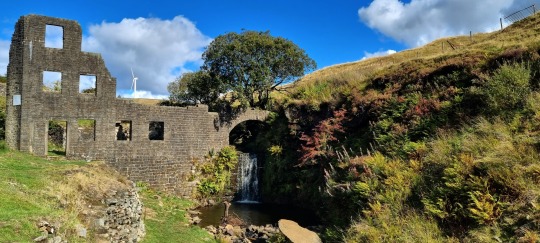
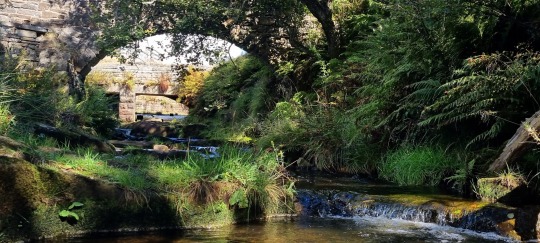
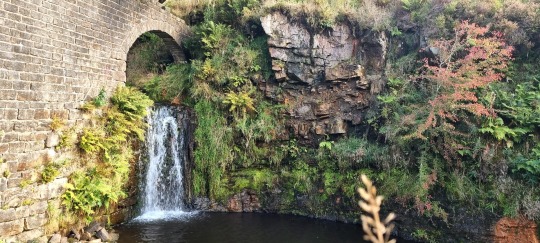
Mill ruins from 1786
#mine#nature#england#countryside#photography#ruins#mill#architecture#history#industrial revolution#rural#nature photography#buildings#river#waterfall#plants#stream
6K notes
·
View notes
Text
What i've been learning thru my research is that Lawn Culture and laws against "weeds" in America are deeply connected to anxieties about "undesirable" people.
I read this essay called "Controlling the Weed Nuisance in Turn-of-the-century American Cities" by Zachary J. S. Falck and it discusses how the late 1800's and early 1900's created ideal habitats for weeds with urban expansion, railroads, the colonization of more territory, and the like.
Around this time, laws requiring the destruction of "weeds" were passed in many American cities. These weedy plants were viewed as "filth" and literally disease-causing—in the 1880's in St. Louis, a newspaper reported that weeds infected school children with typhoid, diphtheria, and scarlet fever.
Weeds were also seen as "conducive to immorality" by promoting the presence of "tramps and idlers." People thought wild growing plants would "shelter" threatening criminals. Weeds were heavily associated with poverty and immortality. Panic about them spiked strongly after malaria and typhoid outbreaks.
To make things even wilder, one of the main weeds the legal turmoil and public anxiety centered upon was actually the sunflower. Milkweed was also a major "undesirable" weed and a major target of laws mandating the destruction of weeds.
The major explosion in weed-control law being put forth and enforced happened around 1905-1910. And I formed a hypothesis—I had this abrupt remembrance of something I studied in a history class in college. I thought to myself, I bet this coincides with a major wave of immigration to the USA.
Bingo. 1907 was the peak of European immigration. We must keep in mind that these people were not "white" in the exact way that is recognized today. From what I remember from my history classes, Eastern European people were very much feared as criminals and potential communists. Wikipedia elaborates that the Immigration Act of 1924 was meant to restrict Jewish, Slavic, and Italian people from entering the country, and that the major wave of immigration among them began in the 1890s. Almost perfectly coinciding with the "weed nuisance" panic. (The Immigration Act of 1917 also banned intellectually disabled people, gay people, anarchists, and people from Asia, except for Chinese people...who were only excluded because they were already banned since 1880.)
From this evidence, I would guess that our aesthetics and views about "weeds" emerged from the convergence of two things:
First, we were obliterating native ecosystems by colonizing them and violently displacing their caretakers, then running roughshod over them with poorly informed agricultural and horticultural techniques, as well as constructing lots of cities and railroads, creating the ideal circumstances for weeds.
Second, lots of immigrants were entering the country, and xenophobia and racism lent itself to fears of "criminals" "tramps" and other "undesirable" people, leading to a desire to forcefully impose order and push out the "Other." I am not inventing a connection—undesirable people and undesirable weeds were frequently compared in these times.
And this was at the very beginnings of the eugenics movement, wherein supposedly "inferior" and poor or racialized people were described in a manner much the same as "weeds," particularly supposedly "breeding" much faster than other people.
There is another connection that the essay doesn't bring up, but that is very clear to me. Weeds are in fact plants of the poor and of immigrants, because they are often medicinal and food plants for people on the margins, hanging out around human habitation like semi-domesticated cats around granaries in the ancient Near East.
My Appalachian ancestors ate pokeweed, Phytolacca americana. The plant is toxic, but poor people in the South would gather the plant's young leaves and boil them three times to get the poison out, then eat them as "poke salad." Pokeweed is a weed that grows readily on roadsides and in vacant lots.
In some parts of the world, it is grown as an ornamental plant for its huge, tropical-looking leaves and magenta stems. But my mom hates the stuff. "Cut that down," she says, "it makes us look like rednecks."
9K notes
·
View notes
Text

Imagine a pinecone as heavy as a bowling ball and the size of a chihuahua. Believe it or not, such pinecones exist—and they belong to the coulter pine (Pinus coulteri), a conifer that can be found in parts of North America including California and Mexico. Infamous among loggers and foresters, this tree is nicknamed "the widowmaker" because of the unlucky individuals who met their fate as a result of its falling pinecones. This species produces the largest pinecones on the planet, weighing up to 11 lbs (5 kg)!
Photo: damontighe, CC BY-NC 4.0, iNaturalist
#science#nature#natural history#trees#botany#pinecone#fact of the day#did you know#conifers#pine cones#plants#widowmaker#forest
5K notes
·
View notes
Text

Flowers in a Painted Ceramic Vase with Moths by Jan Brueghel the Elder (1568 - 1625)
1K notes
·
View notes
Text
I was bamboozled by this copper merchant. Stay away from these swindlers.
8K notes
·
View notes
Text
In light of that little "sharks are older than the north star" post, here's some other little fun facts i keep in my brain for such an occasion:
-mammals are older than flowers
-fungi are more closely related to animals than plants
-the t-rex existed in a closer period of time to humans than it did to stegosaurus.
-hyenas are closer in relation to cats than dogs
-the mitochondria in a human cell was originally a kind of bacteria that later evolved into the organelle we all know and love
-Cleopatra lived closer in time to the Iphone's debut than to the construction of the pyramids
-Oxford University is older than the Aztec Empire, and the modern English language (which i'm including Middle English in, as well, just for the record.)
-if you laid the blood vessels in a single human body end to end, it would be over 60,000 miles long, or, long enough to wrap around the earth twice.
-the oldest company in the world still in operation is kongo gumi, which was founded in the year 578
#history#paleontology#i want to make it clear we obviously arent older than plants#just FLOWERING plants#science#biology#i could probably think of more if i wanted to. but im lazy lmao#tibtalks
4K notes
·
View notes
Photo


La Chapelle L’ange au Violon, France by JR pharma
#architecture#nature#plants#france#urbex#abandoned#ruins#travel#history#places#curators on tumblr#uploads
11K notes
·
View notes
Text
This is made of glass
Blaschka Glass Models of Plants exhibit at the Harvard Museum of Natural History
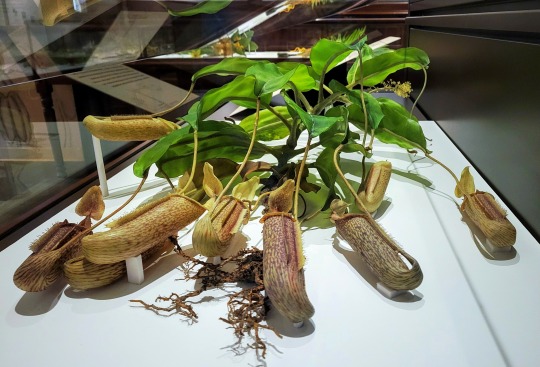

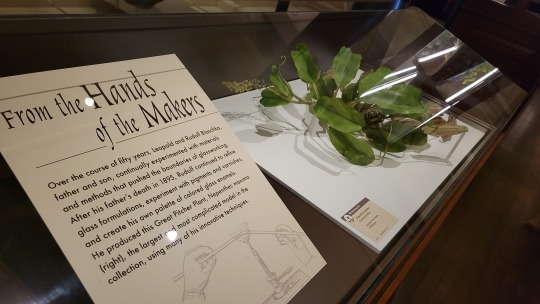
From top to bottom, left to right:
[ID 1:
A photo of a large pitcher plant sculpture sitting in a case of glass and dark wood on a white background in a museum exhibit. The plant is photographed from below, so the plant's roots and bottom of the purple and yellow pitchers are in the foreground. The stems, leaves, and flowers are seen from below.
/end ID 1]
[ID 2:
A close-up photo of the leaves and pitchers, taken from above the pitchers.
/end ID 2]
[ID 3:
There are two signs to the left of the sculpture of the pitcher plant. The first and larger sign reads:
From the Hands of the Makers
Over the course of fifty years, Leopold and Rudolf Blaschka, father and son, continually experimented with materials and methods that pushed the boundaries of glassworking. After his father's death in 1895, Rudolf continued to refine glass formulations, experiment with pigments and varnishes, and create his own palette of colored glass enamels. He produced this Great Pitcher Plant, [italics] Nepenthes maxima [end italics] (right), the largest and most complicated model in the collection, using many of his innovative techniques.
The smaller plaque identifies the artwork and reads:
[italics] Nepenthes maxima [end italics] (Great Pitcher Plant)
Indonesia, New Guinea & Philippines
by Rudolf Blauschka, 1906
/end ID 3]
#how is this glass. how.#glass flowers#rudolf blauschka#art#glass art#nepenthes maxima#pitcher plants#carnivorous plants#harvard museum of natural history#cambridge ma#my photos#botany#i have been editing this post as i learn more about image description best practices
1K notes
·
View notes
Text
#art#nature#photography#positivity#sky#landscape#plants#sunset#ai artwork#nature scenery#history#space#lights#love#life#sky blue#cloudyday#calmness#colorful#video of the day#dark aesthetic#aesthetic#artists on tumblr#digital art#picture#pictures#mountains#tumblr milestone#writers on tumblr#art on tumblr
652 notes
·
View notes
Text
Podcast crossover alert!!! Remember Em, our season three premiere guest on #LoveThisThingCast? She invited Sophie to be a guest on HER podcast, Rooted! Tune in on Apple Podcasts, Spotify, the link above, or wherever you listen to podcasts.
#lovethisthingcast#podcast#podcasts#positivity#love#throuthewindow#rooted#plant history#plants#trees#redbud tree#redbud
2 notes
·
View notes
Text
Yep, sometimes I gotta beat the hyperfixations back with a stick

BACK FIXATION! BACK I SAY!!!
#roman says things#sanders sides#hyperfixation#hyper fixation#meme#memes#hazbin hotel#the walten files#welcome home#little nightmares#the amazing digital circus#dhmis#omori#helluva boss#buddy daddies#obey me#dear evan hansen#the boiled one phenomenon#fnaf#popee the performer#angel hare#dog nightmares#doctor nowhere#the world of mr plant#puppet history#ghost files#ramshackle#wednesday#good omemes#pokemon
752 notes
·
View notes
Text
I’m sure everyone remembers the article from 2020 where researches found three-ply cordage made by Neanderthals.^
But did you know that in the supplemental material for the article, it mentions that pine needles can be made into textiles?^^ As someone who works with textiles myself, I had come across pine needles as a dye stuff, but not as a fibre.
The source is listed as "L’acquisition des matières textiles d’origine végétale en Préhistoire" by Fabinne Médard. It talks about how other fibres, including brambles and broom could have been used prehistorically for a similar purpose, as well as flax. However, it contains only one metion of pine needles.
“Les aiguilles du pin sylvestre (Pinus sylvestris L.) fournissaient, après rouissage, une matière textile appelée « laine des forêts » qui remplaçait la ouate et l’étoupe dont on faisait également des tissus (Mathieu [1858] 1897)" *
The needles of the Scots pine (Pinus sylvestris L.) provided, after retting, a textile material called “forest wool” which replaced wadding and tow from which fabrics were also made.
So Scots pine needles were processed, spun and woven, or simply used directly after processing, potentially prehistorically.
If you follow the source for the quote above, it takes you to a book from 1860 called Flore forestière; description et histoire des végétaux ligneux qui croissent spontanément en France et des essences importantes de l'Algérie. It says:
“On fabrique depuis quelques années, avec les faisceaux fibreux, allongés, et tenaces des aiguilles, une espèce de drap grossier.” **
For several years, we have been making a kind of coarse cloth using the fibrous, elongated and stiff bundles of the needles.
So this processing of pine needles was also happening in the 1800s.
Another souce from the 1840s describes the texture of forest wool as resembling "...horsehair, and has been used for stuffing mattresses"** and that an industry sprung up in Humboldtsau, near Breslau for processing it. Manufacturies for forest wool then spread to Sweden, Holland and France, which may explain the mention in the 1860 Flore forestière.
Despite looking a bit more, but couldn't find much else on the subject expect a recent masters thesis in German (which I couldn't access) and an article on the designer Tamara Orjola.
Orjola's work investigates the modern use of pine needle fabric, showing there is still interest in it. She says:
"Forest Wool began with research on the forgotten value of plants. Valuable local materials and techniques are left behind due to the unwillingness of mass-production to adopt more sustainable practices. In the old days the pine tree was used as food, remedies, to build homes and furniture and for many other purposes. Nowadays, it is only valuable for its timber." ***
I find the line from prehistory to now facinating - that people have looked to something as mundane as a pine needle to spin, especially as researchers are discovering a lot of what they thought was linen fabric is actually ramie (from nettles).
As far as I can tell, only Pinus sylvestris L. and one other variety was used. I am not sure what makes that tree more suitable than other pine trees, or if it was simply a question of availability. In terms of processing, the answer as far as I can tell is retting, presumably followed by scutching and hackling - similar to how flax is processed. However I have not done that myself and cannot speak to the specifics.
It would be something intresting to try though.
________
^ https://www.nature.com/articles/s41598-020-61839-w#MOESM1
^^ https://static-content.springer.com/esm/art%3A10.1038%2Fs41598-020-61839-w/MediaObjects/41598_2020_61839_MOESM1_ESM.pdf
* https://journals.openedition.org/nda/602
** https://www.proquest.com/openview/276605d708970d416923b94e8856d20b/1?pq-origsite=gscholar&cbl=41445
*** https://lampoonmagazine.com/article/2021/05/15/recycled-wood-pine-needles-byproduct/
#fabric#history#i was consumed by the spirit of academia and could not stop reading french articles#please excuse the use of Google translate#my French is okay but not academic article good#it’s just a super interesting topic#the variety of plant fibres used for textiles is always larger than I think
798 notes
·
View notes
Text
Sometimes, old American books about trees are all "This tree is unshapely, has ragged and irregular growth and has little economic value." but I was wrong to characterize them all as such, because for every capitalist-minded book about the USA's trees that is like "ough we gotta exploit every living thing" there's also a book like this:

The book is called Our Friends the Trees and it was written in the 1930's and this is the VERY FIRST PARAGRAPH, no introduction no nothing, just going all in taking no prisoners from the very first line and it CONTINUES like this for the WHOLE book there is ZERO chill throughout the whole length of the book
#trees#plants#so true bestie#context: at this time in history the whole of the eastern USA was being clearcut and the dust bowl was happening
3K notes
·
View notes